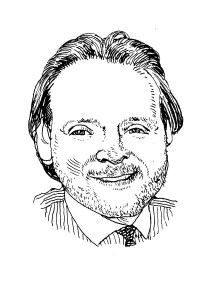Winter of Our Discontent: May Marked Fourth-Straight Month of Job Declines
By Jotham Sederstrom June 6, 2012 10:00 am
reprintsLast Friday’s jobs report was ugly and, interestingly, provides both negative and positive messages for our commercial real estate market. Unfortunately, it is more negative than positive, but there is a silver lining to this economic cloud.
Last week, the Department of Labor announced that only 69,000 jobs were created in May, less than half of what economists’ consensus was projecting. This represented the fourth-straight month of declining jobs growth. A mild winter, it appears, encouraged employers to hire earlier than usual, which boosted winter hiring but is now taking its toll on spring numbers.

Beyond lackluster net job growth, there were components of the report that were additionally troubling. The average work week was shortened, meaning that employers will have the ability to increase the hours employees are working before they are forced to hire new ones.
Underemployment—which reflects people working part-time who would prefer to be working full-time as well as those who have become discouraged and have stopped looking for a job for more than 30 days—continues to jump. And the number of long-term unemployed—those who have been jobless for six months or more—as a percentage of all unemployed people increased to 42.8 percent, a new peak.
The weak jobs report comes on the heels of the government adjusting first-quarter GDP growth from an initial meager 2.2 percent down to 1.9 percent. GDP growth had been 3 percent in the fourth quarter of last year, so the first-quarter downgrade is particularly disappointing.
In the broader economy, we have also seen a recent report showing that U.S. manufacturing growth slid in May, with sharp drops in both production and exports. Fortunately, inflation remains in check, auto sales are surprisingly strong and falling energy prices are helping U.S. consumers with limited disposable incomes.
One thing is clear and that is that as the economy goes, so will go our underlying commercial real estate fundamentals. Based on the recent economic data, it appears that the U.S. economy may be following Europe and Asia into a slowdown that shouldn’t make any of us feel too good.
The impact on our commercial real estate fundamentals is direct. Without jobs being created (remember, we lost 8.5 million jobs and, more than three years later, have regained only about half of those), consumer spending and consumer confidence will remain low, affecting our retail properties, while office tenants will not require additional office space, keeping vacancy rates at elevated levels. And, of course, apartments are not purchased by or rented to folks without jobs.
The bright side here (and bright side is only in the short-term) is that the yield on the 10-year Treasury note is now hovering around an all-time low of 1.5 percent. This the only positive impact of our current economic conditions. Low rates should continue to exert downward pressure on lending and capitalization rates and, therefore, upward pressure on property values.
Whether these low interest rates (for an extended period of time) are creating an asset bubble, forcing properties to be purchased at prices above their rational value, is up for debate. Time will tell but has history has shown us that these low rates for extended periods have typically benefited sellers, not buyers, and that asset bubbles are generally created at times of low interest rates.
As we head into the home stretch in an election year, it is unlikely that there will be significant policy changes before the election. The recent persistently weak economic data increases the likelihood that the Fed will institute some form of QE3 to try to stimulate economic activity. The pros and cons of this strategy are arguable, but most economists believe more easing is coming.
Looming uncertainty will further mute economy recovery. A variety of tax rates are set to rise at the end of this year that could cause businesses to hold off on hiring. Particularly meaningful for real estate will be what happens with capital gains taxes. If the Bush tax cuts are allowed to expire, cap gains would rise from 15 percent to 20 percent. If the president retains his office, he has indicated that he would like to see a capital gains tax rate of at last 30 percent. These potential increases could create additional supply of property for sale, which would bode well for volume in the marketplace, particularly given the excessive demand and low interest rates.
Rknakal@masseyknakal.com
Robert Knakal is the chairman and founding partner of Massey Knakal Realty Services and in his career has brokered the sale of more than 1,200 properties, having a market value in excess of $8 billion.


